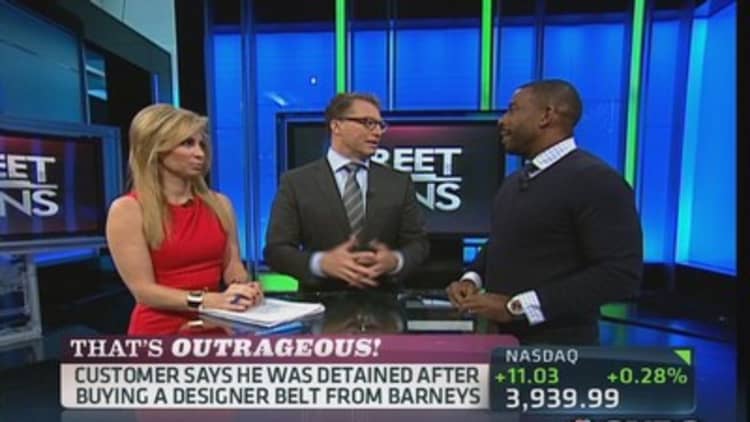Remember when China, Brazil and other emerging markets were the future of luxury?
They still are—but a much more distant future. When it comes to current growth, the global hot spot for high-priced luxury sales is the U.S.
According to new research from Departures magazine and Ledbury Research, which surveyed top luxury CEOs, North America was listed as the most important market for growth over the next five years. East Asia ranked second, followed by Western Europe, Eastern Europe and then Central and South America.
Fully 89 percent expected North America to be the most important contributor to growth.
"The U.S. is really the focus for many of these CEOs," said Steven DeLuca, senior vice president and publisher of Departures, part of American Express Publishing. "I think they're putting less emphasis on China than they might have been in the past."
(Read more: China's 2% account for third of world luxe sales)
Granted, luxury companies aren't pulling up stakes (or Birkin bags) from China. Chinese luxury consumers continue to boost sales of many of the top luxury companies. Coach, for instance, which had weak sales in the U.S., had double-digit growth in China in the third quarter.
And the Chinese luxury consumer continues to shop around the world, accounting for a significant portion of luxury sales in Europe—especially Paris.
But the American wealthy are likely to be the biggest driver of the $260 billion luxury goods industry in the coming years. Luxury CEOs expect sales to grow an average of 9 percent over the next 12 months.

When asked to list the positive factors impacting the luxury business, the CEOs in the survey listed online commerce first, followed by the U.S. growth rate, then the Chinese growth rate and then mobile commerce.
Fully 58 percent of luxury CEOs are confident about the U.S. recovery. The weakest parts of the world are expected to be the Middle East, Southeast Asia, Japan and Africa.
The luxury focus on the U.S. certainly appears to be backed up by recent wealth numbers. According to Credit Suisse, the U.S. created 94 percent of the new millionaires in the world over the past year. The U.S. minted 1.7 million of the world's 1.8 million new millionaires over the past 12 months. China, by contrast, created only 90,000.
(Read more: US created 90% of world's new millionaires)
Rising stocks and asset values have been the biggest driver of wealth creation in the U.S. And with the Federal Reserve set to keep its easy money flowing into the market, luxury sales are likely to continue.
DeLuca said the focus of the luxury business today is no longer about value and mass-marketing, but higher-priced, premium products that can generate even fatter margins. Fully 86 percent said they plan to raise prices and or increase focus on higher end products to target the wealthiest slice of the consumer segment.
"There is very little price sensitivity" with this high end consumer, DeLuca said.
The survey found that the wealthier consumers—rather than the aspirational or "trading up" consumer—is the core of the market. And people are more often buying for themselves rather than gifting.
(Read more: Why the wealthy don't give more to charity)
As one respondent said, "The rich are getting richer" and the market is increasingly dependent on serving them.
—By CNBC's Robert Frank. Follow him on Twitter @robtfrank.
Watch "Secret Lives of the Super Rich," an all-new series airing Wednesdays at 9 p.m. ET/PT. http://superrich.cnbc.com


